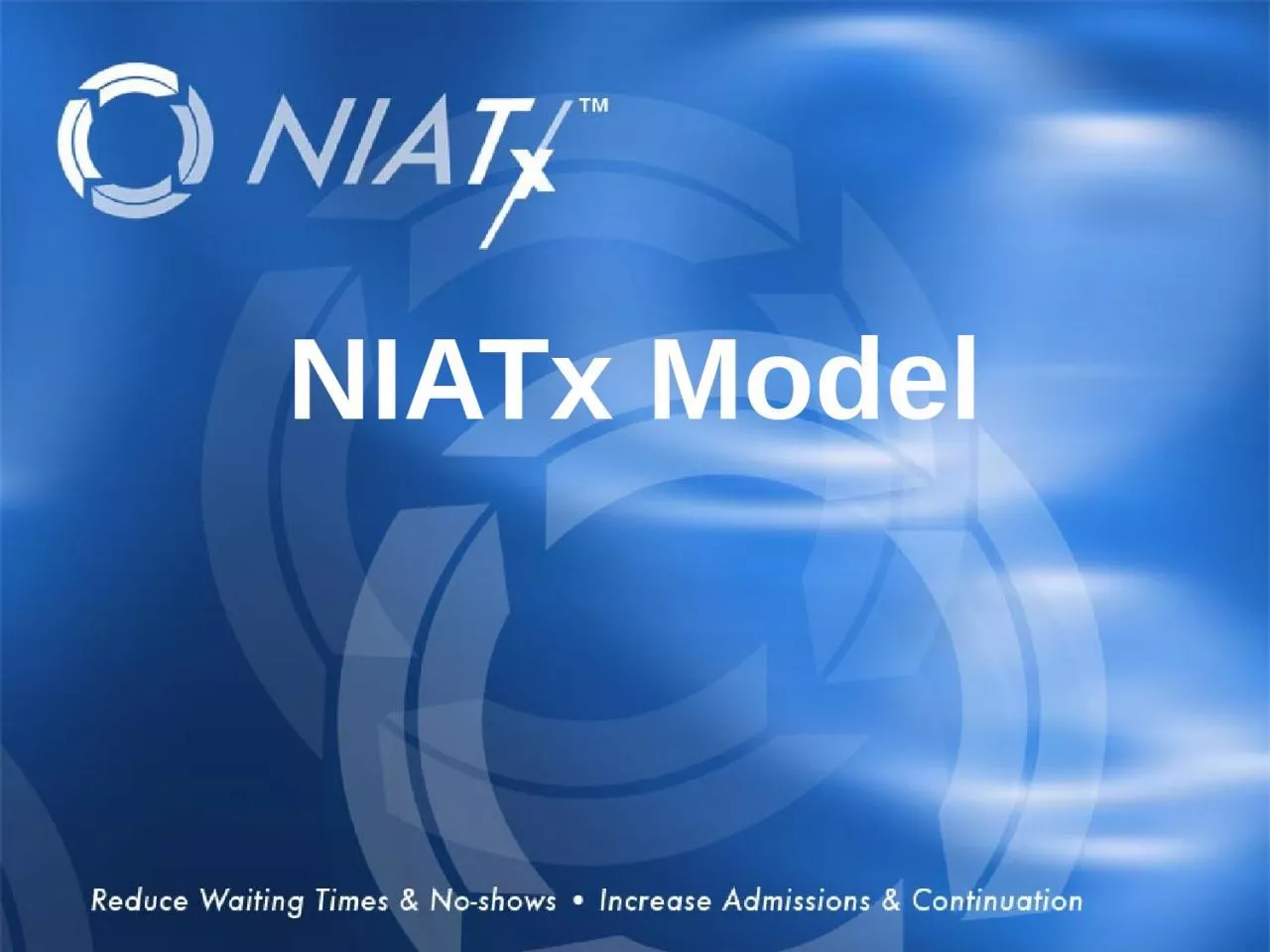

A person who creates an environment positive change can occur Champions the use of data and process thinking as an effective means to achieve goals Allocates resources time personnel within the bounds of their authority ID: 1001844
Download Presentation The PPT/PDF document "Overview NIATx Model What is a Change L..." is the property of its rightful owner. Permission is granted to download and print the materials on this web site for personal, non-commercial use only, and to display it on your personal computer provided you do not modify the materials and that you retain all copyright notices contained in the materials. By downloading content from our website, you accept the terms of this agreement.
1. OverviewNIATx Model
2. What is a Change Leader?A person who creates an environment positive change can occurChampions the use of data and process thinking, as an effective means to achieve goalsAllocates resources (time, personnel) within the bounds of their authoritySponsors and guides project teams
3. NIATx HistoryRWJF and SAMHSA SupportedEvidence-based practicesEasy to adopt methods
4. What is a process?The steps we take in order to do something.
5. Why Process Improvement?Everything we do is part of some processEach of us serves others, or is served by processes of work.85 percent of problems are caused by processes – not people.
6. Why Process Improvement?“Your processes of work are perfect. They are perfectly designed to give you the results you are getting.”- W. Edwards Deming, process improvement pioneer
7. Five Key Improvement Principles
8. 1. Understand & Involve the CustomerMost important of the Five PrinciplesWhat is it like to be a customer?Your staff are customers, too.Conduct walk-throughs.Hold focus groups.
9. Why a Walk-through?The walk-through…Helps understand the customer and organizational processesProvides a new perspectiveAllows you to feel what it’s likeLets you see the process for what it is Seeks out and identifies real problems Generates ideas for improvementKeeps you asking why?…and why? again
10. 2. Focus on Key ProblemsWhat keeps the CEO awake at night?What processes do staff and customers identify as barriers to excellent service?
11. Key Roles:Executive Sponsor
12. Executive SponsorMartin Luther KingSandra Day O’ConnorUS Supreme Court JusticeSonia Ghandi, President, Congress Party IndiaHilary Rodham Clinton,US Secretary of StateBarack Obama, PresidentJohn F Kennedy, President
13. Executive SponsorVisionProvides a clear link to a strategic planSets a clear aim for the Change ProjectEngagementSupports the change leaderPeriodically attends change team meetingsPersonally invites change team participants LeadershipRemoves barriers to changeConnects the dotsCommunicates clearly, concisely, and constantly
14. 3. Powerful Change LeaderThe Change Leader must have…Influence and respect across levels of the organizationA direct line to the Executive SponsorEmpathy for all staff membersTime devoted to leading Change Projects
15. Key Roles: Change LeaderQueen Rania of JordanDean KamenOprah WinfreyBill GatesMichelle ObamaReggie White
16. Leadership CharacteristicsOverall PerspectiveChange Leader Characteristic Survey29 Categories, 99 responses - Change leaders (n = 40)/Executive sponsors (n=20)/Change teams members (n=39)
17. Key Roles: Change Team
18. What do Change Team Members look like?Front line workers and supervisors in unit where changes will be implementedOther employees impacted by the change People with special knowledge about the change, e.g. alumni, family members, IT staff
19. Change Team ResponsibilitiesIdentify possible changes that could meet the objectiveDecide how to implement the changeCreate and conduct rapid-cycle pilot tests until goal is achievedStudy results to see if the change should be adopted, adapted or abandoned
20. 4. Ideas from Outside OrganizationReal creative problem solving comes from looking beyond the familiar.Provides a new way to look at the problemClient EngagementNorthwest AirlinesFord Motor CompanyReduce no-shows through remindersDentist OfficePublic LibrariesClient HandoffsNational Rental CarHyatt Place Hotels
21. 5. Rapid-cycle TestingStart by asking three questions:What are we trying to accomplish?How will we know a change is an improvement?What changes can we test?Model for ImprovementLangley, Nolan, Nolan, Norman, & Provost. The Improvement Guide, San Francisco, Jossey-Bass Publishers, 1996
22. What makes this approach to change different?Change is a big experimentNo mistakes, no right or wrongData tells you if the change was an improvementCustomer guides change ideas
23. PDSA Cycle for ImprovementActPlanStudyDo What improvement will we make next?Do we need to: Abandon? Adapt? Adopt?Sustain the gain Objective Questions and predictions (why) Plan to carry out the cycle (who, what, where, when) Complete the analysis of the dataCompare data to predictionsSummarize what was learned Carry out the plan Document problems and unexpected observations Begin analysis of the data
24. This is the NIATx modelChange ProjectaimPeopleTools1. Executive Sponsor2. Change Leader3. Change Team1. Walk-through2. Flowchart3. NGT4. PDSA Rapid Cycle TestingUsing existing resources